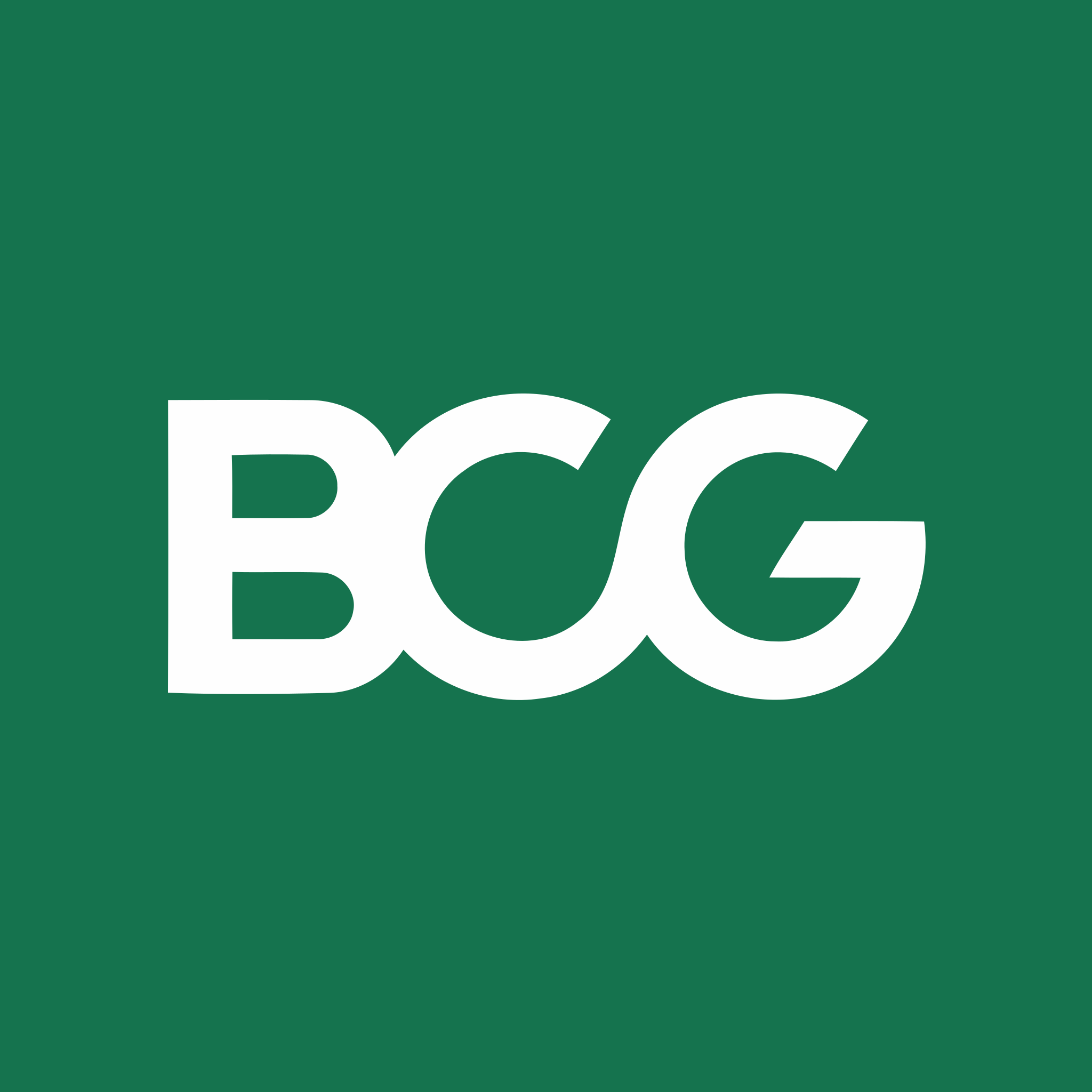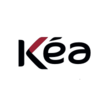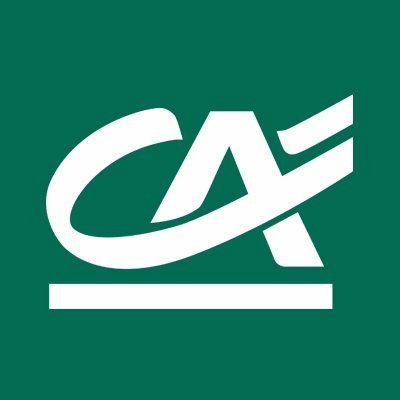Detailed content of our market study
 Inforamtion
Inforamtion
- Number of pages : 35 pages
- Format : Digital and PDF versions
- Last update :
 Summary and extracts
Summary and extracts
1 Market Summary
1.1 Definition and presentation
Architectural services include a broad spectrum of professional activities aimed at the design, planning, management, and supervision of construction, urban planning, and interior design projects. These services include developing aesthetic and functional solutions, managing administrative paperwork, coordinating construction and renovation work, and assisting in the selection of materials and finishes. The main goal is to create efficient, sustainable, safe, and harmonious spaces while meeting client needs and current regulations.
Globally, the architectural services market is expected to grow steadily between 2024 and 2030, from $394.51 billion to $525.66 billion, an overall increase of 33.2 percent and a compound annual growth rate (CAGR) of 4.9 percent.Asia-Pacific remains the region with the largest market share, accounting for 36.7 percent of the total, followed byEurope (16.65 percent) and the rest of the world with 46.65 percent. This figure reflects the strong construction and infrastructure development in countries such as China and India, as well as the expansion of cities in emerging markets. In Europe, the architectural services sector also shows continued growth, with the market value rising from $65.68 billion in 2024 to $76.84 billion in 2028, registering an overall increase of 16.9% and a CAGR of 4.0%. The industry's expansion is driven by the recovery in construction activity and a growing demand for architectural design for infrastructure, residential, and commercial buildings. In particular, the industrial segment accounts for 42.4% of the market value, highlighting the importance of architectural solutions for production facilities and logistics complexes.
The turnover of architectural firms' activities in Italy has been fluctuating in recent years, but overall it has seen a growth of 41.1 percent, supported by the economic recovery and building incentives introduced by the government.
At the same time, the number of firms active in the sector increased by 21.6 percent, signaling a strengthening of the sector due to new investment opportunities in the construction sector. The number of employees also followed a positive trend, growing by 18.8 percent, reflecting increased demand for architectural services and an expanding market.
Analyst's comment
The architectural services market is going through a phase of sustained growth, both globally and in Europe, driven by a recovery in construction, investment in infrastructure and a growing focus on sustainability and technological innovation. In Italy, the sector has benefited from government incentives and more structured demand for advanced design, leading to significant growth in turnover and employment. However, the main challenge for architectural firms will be to adapt to an increasingly competitive and digitized market, investing in innovative tools such as 3D modeling, Building Information Modeling (BIM) and artificial intelligence to optimize project management and improve operational efficiency.
1.2 The global market
Between **** and ****, the value of the global market for architectural services is expected to grow steadily from US$***.** billion to US$***.** billion, an overall increase of **.* percent at a compound annual growth rate (***) of *.* percent.
The demand for these services is attributable to the increase in construction activities globally. Rapid urbanization in developing countries such as India and Brazil has increased residential and commercial construction projects, thereby driving market growth. In addition, governments around the world are focusing on introducing affordable housing projects. This increase in construction activity is expected to support demand for architectural services, including project management and urban planning, contributing to market expansion.
The healthcare and hospitality sectors are experiencing rapid growth. In the healthcare sector, hospitals focus on improving care by creating new facilities and reorganizing existing spaces, with the aim of optimizing environments, improving clinical outcomes and increasing patient satisfaction. This stimulates demand for services such as construction, project management and interior design. In the hospitality sector, increasing tourism in both developed and developing countries is spurring the construction of new hotels, resorts and restaurants in tourist locations. Businesses are choosing architectural services such as interior design, space planning and schematic design to attract customers and ...
1.3 The European market
The value of the European architectural services market is projected to grow continuously between **** and ****, from US$**.** billion to US$**.** billion, an overall increase of **.* percent at a CAGR of *.* percent. This expansion reflects increased construction activity and growing demand for architectural design for infrastructure, residential, and commercial buildings across Europe.
Value of the European architectural services market Europe, ****-****, in US$ billion ResearchAndMarkets
In ****, in Europe, the industrial segment accounts for **.* percent of the value of the architectural services market, with the other segments making up the remaining **.* percent. This breakdown suggests greater demand for non-industrial projects, such as residential, commercial, and infrastructure projects, than for specifically industrial projects. Breakdown of the value of architecture segments Europe, ****, in % ResearchAndMarkets
1.4 The Italian market
Between **** and ****, the value of the Italian architectural services market is projected to grow steadily from €*.** billion to €*.** billion, an overall increase of **.*% at a CAGR like that of Europe of *.*%.
Forecast of the value of the Italian architectural services market Italy, ****-****, in € billion RegisterCompanies, Businesscoot elaboration
Between **** and ****, the turnover of architectural firms' activities in Italy showed a seesaw trend. After an initial slight growth from €*.** billion in **** to €*.** billion in ****, it returned to €*.** billion in ****. Thereafter, it rose sharply in **** and ****, peaking at *.** billion, before falling again to *.** billion in ****. Overall, the value grew by **.* percent over the period.
Turnover of architectural firms' activities [***] Italy, ****-****, in billion € Istat
1.5 Inflation suffered by the sector
In recent years, the architectural services market in Italy has faced significant challenges due to inflation, which has deeply affected various aspects of the industry.
Rising costs of construction materials:
Inflation has led to a significant increase in the prices of construction materials. For example, in ****, the price of steel dropped ** percent from the previous year, but still remains significantly higher (***) than in the pre-Covid period. At the same time, the price of wood fell by **%. These fluctuations have complicated the economic planning of projects, forcing architectural firms to revise budgets and continually negotiate with suppliers and clients to maintain profitability. BuildBull
Impact on architectural firms' operating costs:
In addition to materials, inflation has affected architectural firms' operating costs. Energy expenses have increased, affecting the use of advanced technologies such as design software and graphics processing servers. In addition, rising salaries for skilled technicians further increased fixed costs, putting pressure on firms' profit margins.
Fluctuations in demand for architectural services:
Demand for architectural services has shown mixed trends. In the residential sector, rising mortgage interest rates made real estate investments less affordable, causing a slowdown in new projects. However, there has been growth in renovation requests, often spurred by tax bonuses ...
2 Demand analysis
2.1 Overview of demand
The market for architectural and engineering services, after an exponential upswing in recent years, seems to have reached stability. Funds allocated to Italy appear to have been fully exploited. Contracting stations have published calls for tenders* for a total amount of more than ** billion euros. According to data compiled by the Study Center of the National Council of Engineers, contracting stations published calls for tenders for engineering and architectural services in the year just ended for a total amount of approximately *billion *** thousand euros, in line with the figures recorded the previous year.
Tender amounts for engineering and architecture services in Italy grew significantly from **** to ****, from *** to **** million euros, an overall increase of *** percent. The peak occurred in **** with **** million, followed by a slight decrease in ****. The sharpest increase occurred between **** and ****, reflecting the impact of economic revitalization policies or infrastructure investments.
Base auction amounts for engineering and architectural services Italy, ****-****, in millions of € CNI
Most of the total amount went to integrated procurements, with **.* percent of the total. Typical engineering and architectural services without execution accounted for **.* percent, followed by framework agreements with **.* percent, while competitions made a marginal impact with just *.* percent.
Total amount on auction basis ...
2.2 Demand drivers
The market for architectural services in Italy is influenced by several factors that determine demand.
*. Public investment and government policies:
Public investments, especially those related to infrastructure development and urban redevelopment plans, have a significant impact on the demand for architectural services. For example, the implementation of the National Recovery and Resilience Plan (***) has provided substantial resources for school, health and infrastructure construction projects, increasing opportunities for architectural firms.
*. Technological innovation and digitization:
The adoption of advanced technologies, such as Building Information Modeling (***), is transforming the architecture industry. BIM facilitates integrated design and efficient project management, increasing the demand for qualified professionals in this field. In addition, the digitization of design processes and the use of innovative tools have become key requirements in many public tenders, prompting firms to invest in digital skills. Bimportal
*. Environmental regulations and sustainability:
Increasing attention to environmental sustainability and stricter energy regulations have increased the demand for architectural designs geared toward energy efficiency and the use of environmentally friendly materials. Incentives for low-impact buildings and energy certifications are driving developers to demand innovative and sustainable design solutions.
*. Trends in the construction industry:
The economic cycle of the construction industry directly affects the ...
2.3 Trends in demand for architectural services
Online searches for architecture in Italy show a significant change between early **** and late ****. The index drops from **.* to **.*, an overall decrease of **.* percent. Marked declines are observed in the summer period, especially in August **** and ****, followed by significant recoveries in September. The highest peak is in September **** (***), while the lowest values are recorded in August of both years, signaling a seasonal trend. The gradual decrease in the second half of **** reflects a general decline in interest from the beginning of ****.
The numbers represent search interest relative to the highest point on the graph in relation to the region and period indicated. A value of *** indicates the highest frequency of search for the term; ** indicates half as many searches. A score of *, on the other hand, indicates that not enough data were found for the term.
Trends in online searches for architecture Italy, ****-****, index Google Trends, Businesscoot elaboration
Online searches for architecture in Italy show a higher concentration in Lazio, which reaches the highest value of ***, followed by Tuscany, Veneto, Emilia-Romagna and Abruzzo with similar values around **-**. In contrast, southern regions such as Calabria and Molise, along with Trentino-Alto Adige and Valle d'Aosta, show the lowest values, with the ...
2.4 New Demand Trends
Trends in the demand for architectural services are evolving rapidly, influenced by demographic, economic, technological and cultural changes. They represent a rich landscape of opportunities for architectural firms that will adapt and innovate, responding to society's evolving needs.
*. Sustainable architecture and green design:
Growing demand for green projects: Clients, both private and corporate, are seeking buildings certified to standards such as LEED, BREEAM or WELL. Use of sustainable materials: There is an increase in preference for recycled, low-impact and local materials to reduce the carbon footprint. Energy efficiency: Integration of photovoltaic systems, advanced thermal insulation and smart energy management are among the most common requests.
*. Customization and adaptive design:
Customized spaces: Clients demand designs that reflect their individual needs, from room layouts to specific aesthetic details. Flexible design: With the growth of smart working and hybrid lifestyles, there is a strong demand for buildings that can easily adapt to different functions over time. Inclusiveness: Designing accessible spaces for all people, regardless of their physical abilities or needs.
*. Technological innovation:
Digital design: The use of advanced software such as BIM (***) has become essential to optimize costs and improve design accuracy. IoT integration: Smart buildings, which use sensors to optimize ...
3 Market structure
3.1 Structure and dynamics of the Italian market
The number of architecture firms in Italy increased by **.* percent between **** and ****, from **,*** to **,***. After a slight decline in ****, a steady and significant growth is observed, especially between **** and ****.
Number of firms engaged in the activities of architectural firms [***] Italy, ****-****, in number Istat
During ****-****, **.* percent of firms operating in architectural firms in Italy are sole proprietors, freelancers or self-employed, showing a strong prevalence of small-scale activities. Limited liability companies account for only *.* percent, followed by other partnerships (***), indicating a limited prevalence of more complex organizational structures in the sector. Legal form of firms operating in the activities of architectural firms Italy, ****-****, in % Istat
The number of employees grew by **.* percent between **** and ****, from **,*** to **,***. After a decrease in ****, the trend reversed, with sustained growth especially from **** to ****, in parallel with the increase of firms in the sector. Number of employees working in the activities of architectural firms [***] Italy, ****, in number Istat
3.2 The main players in the market
The main companies in the market are as follows:
Ideàs Srl Società Benefit: It is an architecture and engineering firm based in Milan, Via Spartaco **. Founded in ****, the firm offers integrated design and consulting services for the development of real estate initiatives and building interventions both in Italy and abroad. With a multidisciplinary team of about ** professionals, Ideàs specializes in energy and seismic upgrading of buildings, paying particular attention to environmental sustainability. Among the services offered are feasibility analysis and study, facility design, access to incentives, site management and construction supervision. It is registered as a Benefit Corporation, reflecting its commitment to goals of common benefit in addition to profit. Acpv Architects: An international architectural laboratory founded in **** in Milan by Antonio Citterio and Patricia Viel. With a team of more than *** professionals and ** partners, the firm is dedicated to creating unique and high-profile architectural solutions around the world, pursuing timeless aesthetics and promoting shared well-being. Recent projects include winning the competition for the redevelopment of the former Rome Fairgrounds with the masterplan "The City of Joy." This project aims to transform the area into a new residential and green neighborhood with ample pedestrian space and community amenities. Each ...
4 Supply analysis
4.1 Type of supply and price trends
The range of architectural services offered is broad and varied, adapting to a variety of needs and projects, from small residential projects to major urban planning. For each category of service, prices vary depending on several factors, such as the complexity of the project, the area to be covered, the technologies required, and the specific needs of the client. Below, a detailed table illustrates the main types of services, describing their features, benefits, and their indicative prices, to provide a clear and transparent guide for anyone wishing to use professional architectural expertise
table { width: ***%; border-collapse: collapse; } th, td { border: *px solid #ddd; padding: *px; text-align: left; } th { background-color: #f*f*f*; } tr:nth-child(***) { background-color: #f*f*f*; } ul { margin: *; padding-left: **px; }
4.2 Price trends
The price index grew between the first quarter of **** and the third quarter of ****, from ***.* to ***.*, an increase of *.* percent. The trend shows an upward trend, with a slight decline in the first quarter **** followed by a recovery in subsequent quarters.
Business-to-Business Services Output Price Index - [***] Architectural and engineering firm activities, technical testing and analysis Italy, ****-****, base index ****=*** Istat
looking at the longer period from **** to ****, the index grew from **.* to ***.*, marking an increase of **.* percent. After a decline in ****, the value returned to a steady rise from **** onward. This confirms a long-term trend of slight growth, in line with what has been observed in recent quarters. Business-to-Business Services Producer Price Index Italy, ****-****, base index ****=*** Istat
5 Regulation
5.1 Regulation and regulatory framework
The architectural profession in Italy is regulated by a complex regulatory system that governs every aspect, from access to the profession to practice, from legal responsibilities to relations with the public administration. This regulatory framework is designed to ensure quality, safety and transparency for both professionals and clients.
To enter the profession, it is necessary to follow a well-defined path, regulated by Presidential Decree ***/****. This decree requires the attainment of a specific academic degree: a three-year degree to become a "junior architect" or a master's degree to obtain the title of "senior architect." Both paths require passing the State Examination, consisting of design, written and oral tests. Only after passing the exam is it possible to register in theRegister of Architects, Planners, Landscape Architects and Conservators, which is mandatory for practicing the profession. This register is divided into two sections: Section A, reserved for senior architects, and Section B, dedicated to junior architects.
The practice of the profession is governed by several regulations that govern relationships with clients, contracting, tax and social security obligations, and compliance with ethical rules. The Code of Ethics, drafted by the National Council of Architects, establishes rules of conduct to ensure transparency, loyalty and fairness. Law ...
5.2 Conclusion
The market for architectural services in Italy is steadily expanding, supported by increasingconstruction activity and growing demand for innovative and sustainable solutions. The push comes from several factors, including public investment, stricter environmental regulations and the adoption of advanced technologies such as Building Information Modeling (***), which is revolutionizing the design and management of construction projects. The sector remains highly fragmented, with a predominance of small, often individually owned firms. However, there is a gradual expansion of more structured and specialized firms, offering integrated services and greater adaptability to the needs of an evolving market.
Companies in the industry are redefining their approach, focusing on three key pillars: sustainable design, digitization and integrated services. The adoption of advanced digital technologies is improving operational efficiency, enabling smoother project management and greater customization of architectural solutions. At the same time, stricter environmental regulations and tax incentives have fostered an increase in building upgrades, pushing the market toward low-impact and energy-efficient solutions. However,rising inflation and operating costs are putting pressure on architectural firms, which must optimize their processes and diversify their offerings to remain competitive.
Key trends that are transforming the market include the growing focus on green architecture, with a focus on sustainable ...
6 Positioning of actors
6.1 Market segmentation
- Ideàs Archi
- Acpv Architects
- Mario Cucinella Architects
- Division Architecture
- Hydea
- Park Associati
- Patricia Urquiola
- Carlo Ratti Associati
- Planum
- Sartoretto Verna
All our studies are available online in PDF format
Take a look at an example of our research on another market!
 Choosing this study means :
Choosing this study means :
Access to more than 35 hours of work
Our studies are the result of over 35 hours of research and analysis. Using our studies allows you to devote more time and added value to your projects.
Benefit from 6 years' experience and over 1,500 industry reports already produced
Our expertise enables us to produce comprehensive studies in all sectors, including niche and emerging markets.
Our know-how and methodology enable us to produce reports that offer unique value for money.
Access to several thousand articles and paid-for data
Businesscoot has access to all the paid economic press as well as exclusive databases to carry out its market research (over 30,000 articles and private sources).
To enhance our research, our analysts also use web indicators (semrush, trends, etc.) to identify market trends and company strategies. (Consult our paying sources)
Guaranteed support after your purchase
A team dedicated to after-sales service, to guarantee you a high level of satisfaction. +44 238 097 0676
A digital format designed for our users
Not only do you have access to a PDF, but also to a digital version designed for our customers. This version gives you access to sources, data in Excel format and graphics. The content of the study can therefore be easily retrieved and adapted for your specific needs.
 Our offers :
Our offers :
The market for architectural services | Italy
- What are the figures on the size and growth of the market?
- What is driving the growth of the market and its evolution?
- What is the positioning of companies in the value chain?
- Data from several dozen databases
5 reports pack (-15%) IT Italy
- 5 reports at €75.6 excluding VAT per study to choose from our Italian catalogue for 12 months
- Save 15% on additional studies purchased
- Choose to be refunded any unused credit at the end of the 12-month period (duration of the pack)
See the terms and conditions of the pack and the refund of unused credit.















